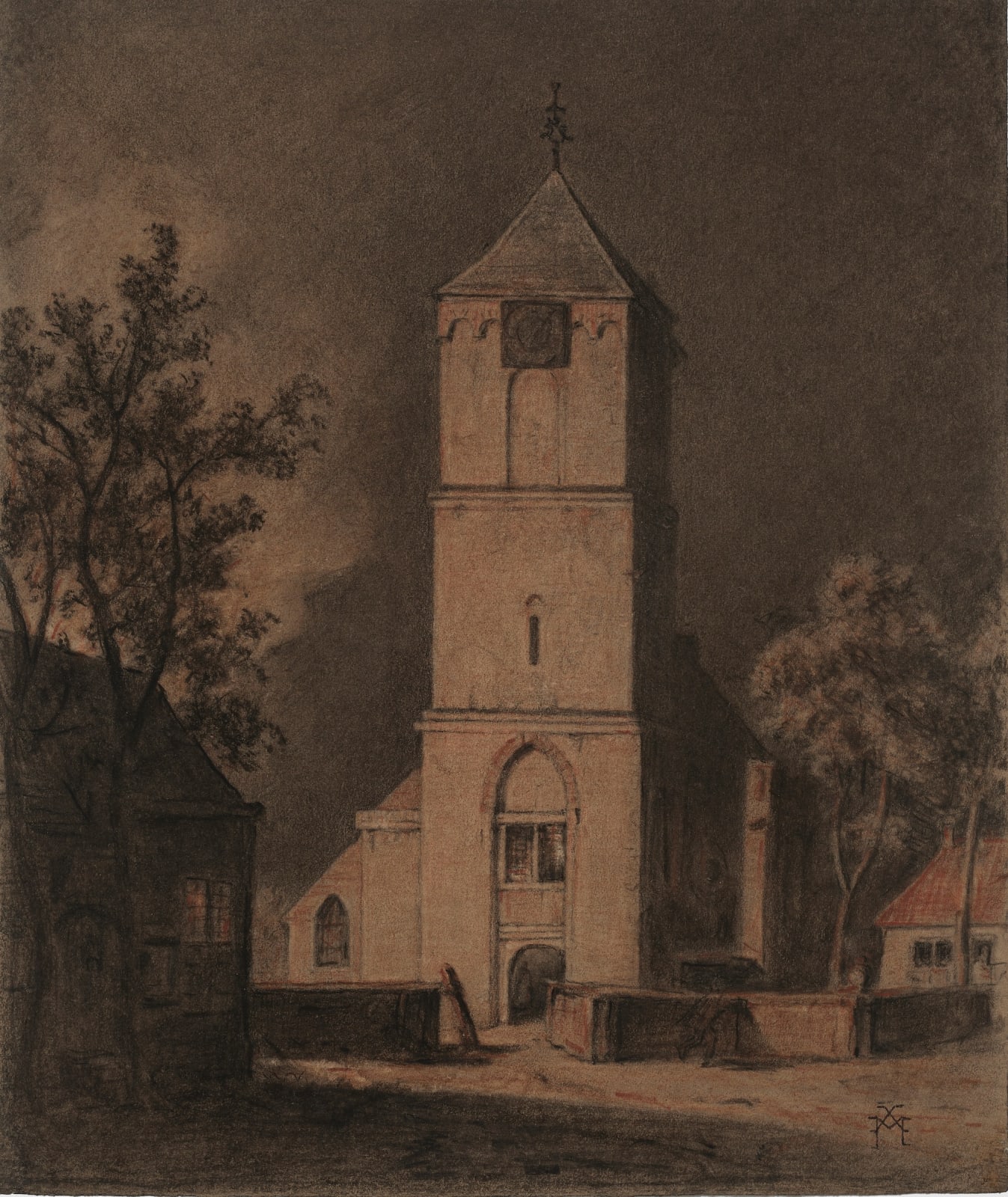Xavier Mellery (1845-1921)
The painter, draftsman and illustrator Xavier Mellery is the perceived precursor of Belgian Symbolism. During his academic years Mellery committed himself to the study of nature, antiquities and historical composition for which he won the Prix de Rome in 1870. Spellbound by the many frescos he encountered in Italy, he aspired to create a peinture d’idées without abandoning realism: this would become his lifelong artistic goal and the basis of his symbolist work. His involvement in the Salon Pour l’Art and Les XX, and contact with Octave Maus and Émile Verhaeren, confirm his contribution to the symbolist movement.
In his intimistic works, starting around 1885, Mellery expresses his search for the meaning of things. The subjects of these drawings are loneliness and silence and often are situated in monasteries, empty corridors, or the artist’s own home. Living beings and their surroundings blend in and the lack of use of color enhances the intimate character of the scenery. Mellery titled these works Emotions d’Art: L’Âme des Choses (artistic emotions: the soul of things). While Mellery continued to create meditative scenes, the Church at Leersum is an example of his monochrome moody realism. Portraying the inner life of things, the meditative silence, achieved through the use of a limited palette and subdued coloring, Mellery shrouds the mundane of this house of worship with mystery.
Church at Leersum is an example of Mellery’s portrayal of a house of worship in typical monochrome moody realism. In an exaggerated palette, concealing the time of day, Mellery converts the ordinary church to an enigmatic haunt. The open gate summons the visitor into a magical place of devotion, while the general tendency at the time moved towards secularism. Exteriors in villages or the countryside, void of any human presence, reoccur in Mellery’s drawings. Never dated or annotated, it is difficult to establish a chronology or the whereabouts of his frequent travels but the facades depicted certainly have the quality of an architectural portrait.
